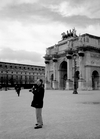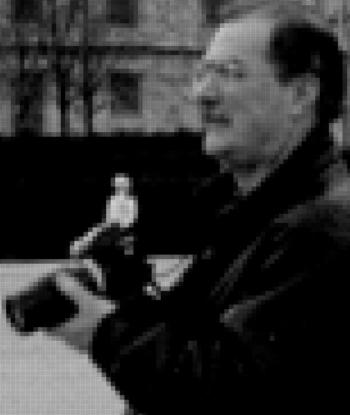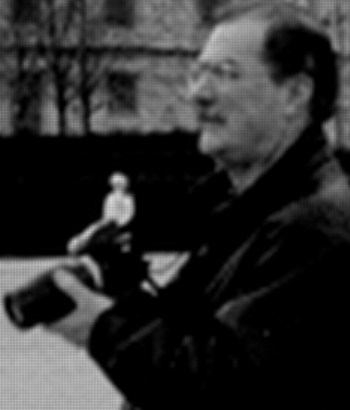HOME
TOPICS
ABOUT ME
This is about as amazing a feat as you could see without going to the circus.
Al Fasoldt's reviews and commentaries, continuously available online since 1983
Get rid of the jaggies when you enlarge your images
April 29, 2001
By Al Fasoldt
Copyright © 2001, Al Fasoldt
Copyright © 2001, The Syracuse Newspapers
Low-resolution digital images look blocky when you enlarge them. But if you choose your software carefully, you can do what seems like a miracle: You can get rid of the jaggies to improve the appearance of just about any low-resolution digital picture.
 "Blockiness" and "the jaggies" are
two ways to describe the stair-step effect you see
when you look very closely at a small section of a
typical digital image. Most images from digital
cameras and from typical image scanners look OK until
you zoom in. When you do that, or when your printer
enlarges a small picture to fit the size of the paper,
you start seeing the block-shaped pixels
("picture elements") that make up every part
of a digital image.
"Blockiness" and "the jaggies" are
two ways to describe the stair-step effect you see
when you look very closely at a small section of a
typical digital image. Most images from digital
cameras and from typical image scanners look OK until
you zoom in. When you do that, or when your printer
enlarges a small picture to fit the size of the paper,
you start seeing the block-shaped pixels
("picture elements") that make up every part
of a digital image.The photos you will see here when you click on the small versions will look like extreme enlargements, but they're actually taken from pixel-by-pixel representations of the images as they looked on my reference computer display. All the pictures are taken from one original photo, taken by my wife, Nancy, in the courtyard of the Louvre in Paris. (Yes, the serious-looking gentleman in the picture is yours truly.)

If I reduced them in any manner to make them seem smaller on your screen, the effects I am describing would have been compromised. In other words, you would not be able to see what I am trying to show you. Remember, clicking on the small version opens the large version, where you will be able to see the effects very clearly.
Look at the blocky pixels. Notice the hand and thumb in the foreground. Look closely and notice that they are totally jagged. The rest of the photo is equally blocky. (The camera lens, for example, is saw-toothed in an extreme way.) What you're seeing are the actual pixels, the way the scanner made the photo. (Remember, this is a very small area of a large photo.)
Notice also that your eyes are very clever. If you stand 'way back from the image, the pixels will start to blend into soft, semi-distinct patterns, and you'll easily be able to see the photo the way it should look instead of the way it does look. So look closely; don't let your eyes deceive you.
A picture that looks like this might seem hopeless. But good software can do an amazing trick. It can smooth out the jagged edges and get rid of nearly all the blockiness. The process is called interpolation, and the software actually fills in what it believes is missing in the jagged areas of the picture.

See for yourself. Here's the same blowup, processed through an interpolation method called the "Lanczos three-lobed" system, or "Lanczos 3." The hand and thumb are almost completely smooth, and the camera lens has taken on an amazing transformation. (Remember, click on the photo to see a clear and large version.) What you need to remember is that the first photo, the one with all the jaggedness, is the original picture. That's how digital processing works. It's a pixel system. So the version here, using the Lanczos 3 method, is about as amazing a feat as you could see without going to the circus.
What software does this sort of magic? You don't have to look far. The software you are now using, if you have a reasonably good image editor, probably does interpolation already. Look for a choice of settings in the image resizing menu.
The images shown here were resized and interpolated by Photo-Brush, an outstanding image editor for Windows. Photo-Brush costs only $38 as of April 2001. (The price is likely to go up soon.) For more info, go to www.mediachance.com.
There are many other methods besides Lanczos 3. Some of them work better than Lanczos in certain kinds of scenes. In the picture taken outside the Louvre, the other methods didn't do as well. Here are examples of seven of them, listed in order of quality, with the best performers (after Lanczos 3) at the beginning.: Catrom, B Spline, Bicubic, Bilinear, Cubic, Hermite, and Sinc.